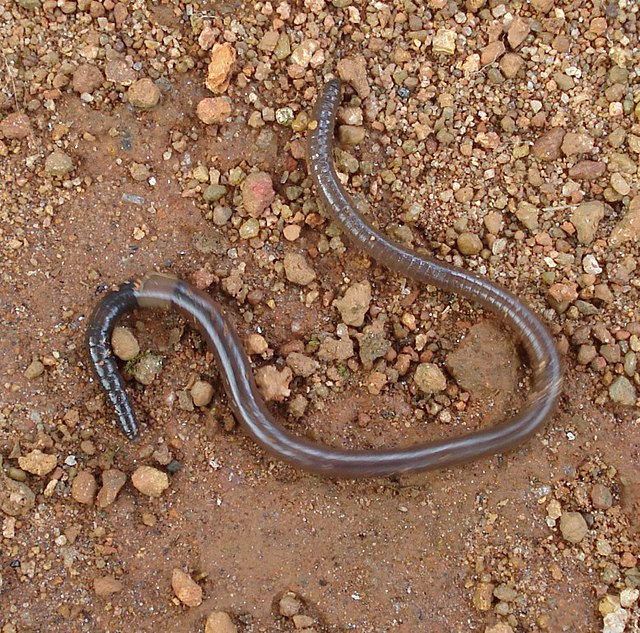A hydrostatic skeleton or hydroskeleton is a type of skeleton supported by hydrostatic fluid pressure, common among soft-bodied invertebrate animals colloquially referred to as "worms". While more advanced organisms can be considered hydrostatic, they are sometimes referred to as hydrostatic for their possession of a hydrostatic organ instead of a hydrostatic skeleton, where the two may have the same capabilities but are not the same. As the prefix hydro- meaning "water", being hydrostatic means being fluid-filled.
The hemichordates are among the many marine animals with hydrostatic skeletons and peristaltic locomotion.
An earthworm is a soil-dwelling terrestrial invertebrate that belongs to the phylum Annelida. The term is the common name for the largest members of the class Oligochaeta. In classical systems, they were in the order of Opisthopora since the male pores opened posterior to the female pores, although the internal male segments are anterior to the female. Theoretical cladistic studies have placed them in the suborder Lumbricina of the order Haplotaxida, but this may change. Other slang names for earthworms include "dew-worm", "rainworm", "nightcrawler", and "angleworm". Larger terrestrial earthworms are also called megadriles as opposed to the microdriles in the semiaquatic families Tubificidae, Lumbricidae and Enchytraeidae. The megadriles are characterized by a distinct clitellum and a vascular system with true capillaries.
Earthworm
A profile SEM image of Lumbricus terrestris setae, small bristle-like projections that facilitate movement by anchoring the earthworm in the soil.
Earthworm copulation
Earthworm cocoons from L. terrestris





